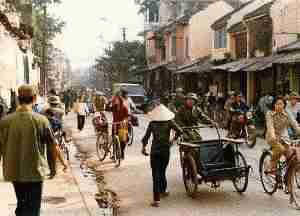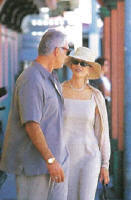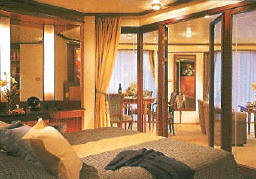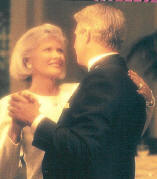 |
|
 |
 Hanoi |
 |
|
|
Hanoi, Vietnam |
||
|
History Summarized from Lonely Planet: Human habitation of Northern Vietnam goes back about 500,000 years according to archaeological evidence. The site of present-day Hanoi has been populated for at least 10,000 years. These first inhabitants formed a feudally organized society that first relied on hunting, fishing and gathering, later developing animal husbandry and agriculture. These tribes developed in relative isolation until about 2000 years ago. Shortly after the fall of the Tang Dynasty in China, revolutionary leader Ngo Quyen, in 938, gave the Chinese a sound whipping and established an independent Vietnamese state, but after his death the region fell into anarchy. In 980, Vietnam became a semi-independent client state of China, maintaining near autonomy for the cost of a biannual tribute to China. For the next
400 years, the site of present-day Hanoi served as the administrative seat
for all of Vietnam. The Grand Royal enclosure, now the city's Old Quarter,
was constructed and the nation's first university, the Temple of Literature,
was founded during the first century of home rule. Attacks by the Khmers,
Chinese and even Kublai Khan were repelled by national forces. All this was
done with little Chinese interference. The
missionaries didn't take the hint, however, and in 1858 several were killed.
The French had an excuse to invade, and by 1867 south Vietnam was a French
colony. Hanoi was captured in 1874. The impotent imperial court was allowed
to remain, indulging itself in various coups and capers, but the French
controlled the nation. The French fought the Viet Minh for eight years, but on May 7, 1954, the French surrendered North Vietnam to the Viet Minh. Fiercely anti-communist leader Ngo Dinh Diem was elected president of South Vietnam. Beginning at least as early as 1959, the North Vietnamese began helping elements in South Vietnam that supported opposed the Diem government and supported unifying the country under North Vietnamese leadership. These South Vietnamese elements were known as the Viet Cong. In 1961, under President John F. Kennedy, the United States introduced 2,000 military advisors to help stop the slippage of control in the South by the Diem-led government. The Vietnam War followed, with the United States backing South Vietnam. The North won the war with the fall of Saigon (now Ho Chi Minh City) in April 1975. There followed one more battle for the North Vietnamese to repel. In 1979, answering for Vietnam's 1978 invasion of Cambodia, China attacked Hanoi. The Chinese were repelled within 17 brutal days. In 1992 Vietnam signed a peace treaty with Cambodia, and in 1994, under President Bill Clinton, the USA lifted economic sanctions on the country. The two former enemies now maintain diplomatic relations Even as the economy continues to open to foreign investment and private ownership, Hanoi's leadership remains in the hands of hard-line communists. The growing private businesses of Hanoi make it obvious, however, that capitalism is making sturdy inroads into Vietnam. For greater detail, attractions, activities, etc., see https://lonelyplanet.com/destinations/south_east_asia/hanoi/history.htm |
||
|
Complimentary Spirits Await |
Return to Your Suite and Sail Away to The Next Adventure |
Entertainment and Dancing Await You |
|
|
|
|
|
EMAIL US |
||


